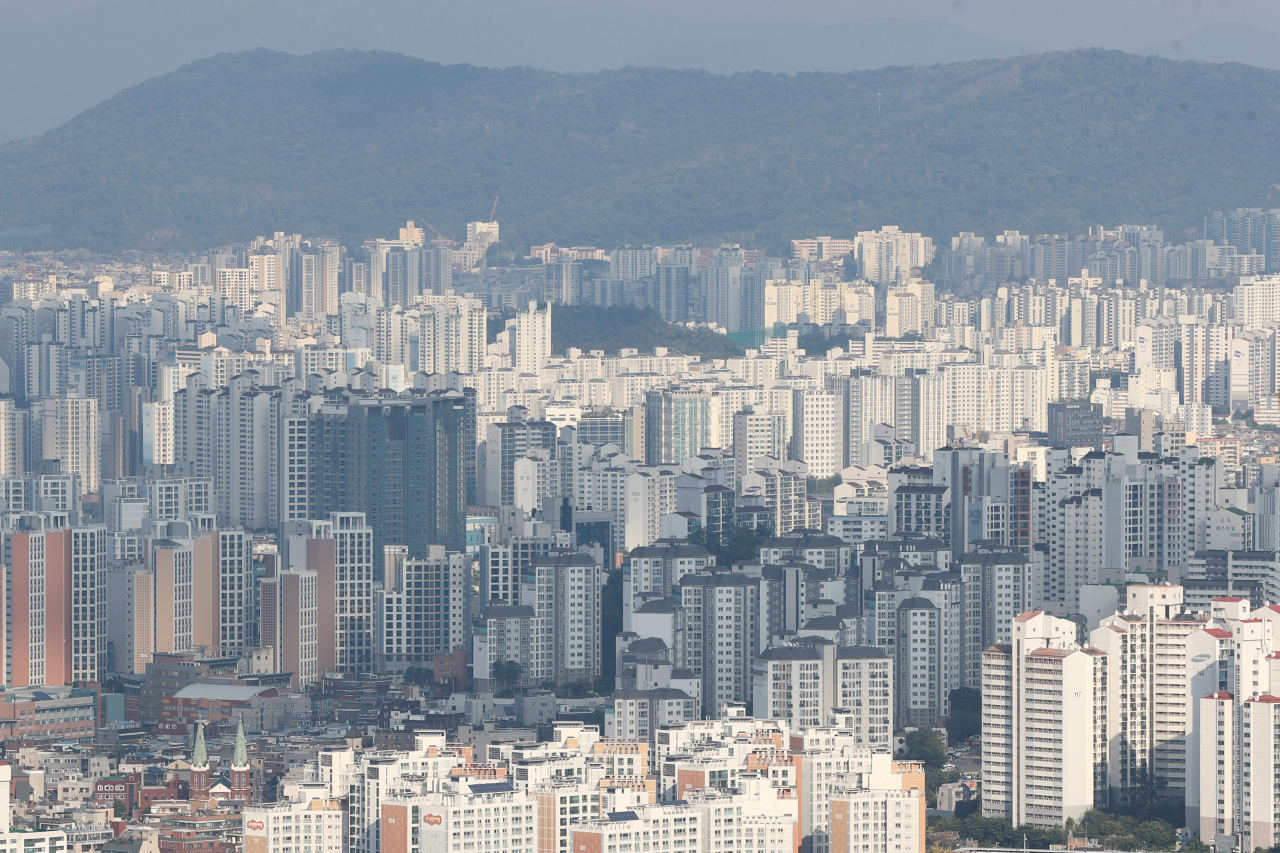[News Focus] Seoul housing prices climb 7% since May
19% growth seen on-year in capital’s home prices
By Kim Yon-sePublished : Oct. 19, 2021 - 15:20

SEJONG -- Housing prices in Seoul have continued to renew their all-time highs this year, in addition to a surge over the past few years since the mid-2010s. Many apartment complexes in the capital have recorded a 100-150 percent increase in price between 2016 and 2020.
According to KB Kookmin Bank and Naver.com, the average trading price of homes in Seoul reached 39.33 million won ($33,100) per 3.3 square meters as of Oct. 15.
This posted a 7.3 percent increase in just five months from 36.63 million won on May 21. On-year growth reached 19.6 percent.
This means the average price of an 84-square-meter home (a popular size in South Korea) in the city is estimated to cost more than 1 billion won as of last month. A same-sized flat in an apartment building in the same location is likely to cost far more.
Amid the pace, chances are high that Seoul housing prices would exceed the 40 million won mark per 3.3 square meters, for the first time in history, by the end of this year.
Of the 25 administrative districts in Seoul, Gangnam-gu maintained the top position as its average trading price of homes came to 68.47 million won per 3.3 square meters on Oct. 15, up 6.6 percent from May 21.
This would put an 84-square-meter unit in Gangnam-gu at around 1.74 billion won. Same-sized units in apartment complexes in the district are likely to hover between 3 billion and 4 billion won.
While Seocho-gu posted an 8.9 percent climb to 67.02 million won over the corresponding May 21-Oct. 15 period, Banpo-dong -- where apartment complexes are clustered -- in the district recorded No. 1 in trading prices, at 94.64 million won, across the country.
Prices have grown 6.8 percent in Seoul’s Songpa-gu and 5.1 percent Gangdong-gu since May 21.
Price growth in Gyeonggi Province and Incheon outpaced that of Seoul, at 12.3 percent and 18 percent, respectively, over the same five-month period. The price per 3.3 square meters was 19.5 million won in Gyeonggi and 14.68 million won in Incheon as of Oct. 15.
Of cities in Gyeonggi Province, a 17.4 percent growth was seen in Siheung and 13.2 percnt in Uijeongbu. In Incheon, Songdo-dong posted a 21.1 percent surge.
For other regions across the country, prices climbed by 16.2 percent in Jeju Province during the five-month period, 9.4 percent in Daejeon, 8.4 percent in Busan, 7.9 percent in Gwangju, 3.9 percent in Ulsan and 2.7 percent in Daegu.
“The tally for apartment buyers in Jeju Island and Incheon's Songdo-dong have sharply increased, as many households chose to seek their children’s admission at international schools in Korea, instead of sending them abroad amid the pandemic.”
Formerly record-breaking price growth in the administrative city of Sejong has stalled in the same period, with the increase staying at zero percent at 21.61 million won per 3.3 square meters.
Though Sejong posted the highest growth among the eight major cities and nine provinces in 2020 -- up to 70 percent in less than a year -- home buyers in the district have been taking a wait-and-see stance after a property speculation scandal came into the spotlight in early 2021.
Meanwhile, more and more online commenters are expressing discontent with the mortgage ban on apartments priced over 1.5 billion won. They are calling for the government to publicize similar regulations, if there are any, in developed countries.
Commercial banks are banned from issuing mortgages to people who seek to buy houses priced over 1.5 billion won. This is an unprecedented real estate policy, unveiled by the government in December 2019.


















![[Today’s K-pop] BTS pop-up event to come to Seoul](http://res.heraldm.com/phpwas/restmb_idxmake.php?idx=642&simg=/content/image/2024/04/17/20240417050734_0.jpg&u=)